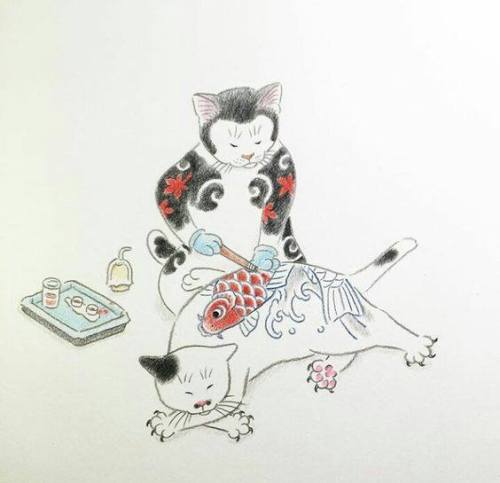Graduating And I Love That My Schools Colours Are Green And Gold, I Couldn’t Be Happier ‘cause I’m
Graduating and I love that my schools colours are green and gold, I couldn’t be happier ‘cause I’m graduating with Loki’s colours. 😂😁☺️

Also, tassels are fun 😋
Tagging because I feel you might appreciate
@worstloki @loki-darkprince-odinson @makerofrunevests
More Posts from Ritasakano and Others
Solar System: Things to Know This Week
Discoveries in planetary science are often both weird and wonderful, and these newest announcements are no exception. This week we present a few of the most interesting recent scientific findings from our missions and NASA-funded planetary science. Take a look:
1. Seeing Spots

Scientists from our Dawn mission unveiled new images from the spacecraft’s lowest orbit at the dwarf planet Ceres, including highly anticipated views of the famous “bright spots” of Occator Crater. Take a look HERE.
2. Pluto’s Secrets Brought to Light

A year ago, Pluto was just a bright speck in the cameras of our approaching New Horizons spacecraft, not much different than its appearances in telescopes since Clyde Tombaugh discovered the dwarf planet in 1930. Now, New Horizons scientists have authored the first comprehensive set of papers describing results from last summer’s Pluto system flyby. Find out more HERE.
3. Rising Above the Rest

In a nod to extraterrestrial mountaineers of the future, scientists working on our Cassini mission have identified the highest point on Saturn’s largest moon, Titan. The tallest peak is 10,948 feet (3,337 meters) high and is found within a trio of mountainous ridges called the Mithrim Montes, named for the mountains in Tolkien’s Middle-Earth.
4. Does the “Man in the Moon” Have a New Face?

New NASA-funded research provides evidence that the spin axis of Earth’s moon shifted by about five degrees roughly three billion years ago. The evidence of this motion is recorded in the distribution of ancient lunar ice, evidence of delivery of water to the early solar system.
5. X-Ray Vision

Solar storms are triggering X-ray auroras on Jupiter that are about eight times brighter than normal over a large area of the planet and hundreds of times more energetic than Earth’s “northern lights,” according to a new study using data from our Chandra X-ray Observatory.
Want to learn more? Read our full list of things to know this week about the solar system HERE.
Make sure to follow us on Tumblr for your regular dose of space: http://nasa.tumblr.com










kazuaki horitomo’s tattooed cats.

Do not go where the path may lead, go instead where there is no path and leave a trail. —Ralph Waldo Emerson
Orion e a explosão de uma estrela.

ALMA views a stellar explosion in Orion
Stellar explosions are most often associated with supernovae, the spectacular deaths of stars. But new ALMA observations of the Orion Nebula complex provide insights into explosions at the other end of the stellar life cycle, star birth. Astronomers captured these dramatic images of the remains of a 500-year-old explosion as they explored the firework-like debris from the birth of a group of massive stars, demonstrating that star formation can be a violent and explosive process too.
The colours in the ALMA data represent the relative Doppler shifting of the millimetre-wavelength light emitted by carbon monoxide gas. The blue colour in the ALMA data represents gas approaching at the highest speeds; the red colour is from gas moving toward us more slowly.
The background image includes optical and near-infrared imaging from both the Gemini South and ESO Very Large Telescope. The famous Trapezium Cluster of hot young stars appears towards the bottom of this image. The ALMA data do not cover the full image shown here.
Credit: ALMA (ESO/NAOJ/NRAO), J. Bally/H. Drass et al.
Um trabalho primoroso de Ivan Mizanzuk. Histórias reais sobre pessoas reais.
Assustador!!
How Do Hurricanes Form?
Hurricanes are the most violent storms on Earth. People call these storms by other names, such as typhoons or cyclones, depending on where they occur.

The scientific term for ALL of these storms is tropical cyclone. Only tropical cyclones that form over the Atlantic Ocean or eastern and central Pacific Ocean are called “hurricanes.”

Whatever they are called, tropical cyclones all form the same way.
Tropical cyclones are like giant engines that use warm, moist air as fuel. That is why they form only over warm ocean waters near the equator. This warm, moist air rises and condenses to form clouds and storms.

As this warmer, moister air rises, there’s less air left near the Earth’s surface. Essentially, as this warm air rises, this causes an area of lower air pressure below.

This starts the ‘engine’ of the storm. To fill in the low pressure area, air from surrounding areas with higher air pressure pushes in. That “new” air near the Earth’s surface also gets heated by the warm ocean water so it also gets warmer and moister and then it rises.

As the warm air continues to rise, the surrounding air swirls in to take its place. The whole system of clouds and wind spins and grows, fed by the ocean’s heat and water evaporating from the surface.
As the storm system rotates faster and faster, an eye forms in the center. It is vey calm and clear in the eye, with very low air pressure.

Tropical cyclones usually weaken when they hit land, because they are no longer being “fed” by the energy from the warm ocean waters. However, when they move inland, they can drop many inches of rain causing flooding as well as wind damage before they die out completely.
There are five types, or categories, of hurricanes. The scale of categories is called the Saffir-Simpson Hurricane Scale and they are based on wind speed.

How Does NASA Study Hurricanes?
Our satellites gather information from space that are made into pictures. Some satellite instruments measure cloud and ocean temperatures. Others measure the height of clouds and how fast rain is falling. Still others measure the speed and direction of winds.

We also fly airplanes into and above hurricanes. The instruments aboard planes gather details about the storm. Some parts are too dangerous for people to fly into. To study these parts, we use airplanes that operate without people.
To learn more about how we study hurricanes, visit: https://www.nasa.gov/mission_pages/hurricanes/main/index.html
Make sure to follow us on Tumblr for your regular dose of space: http://nasa.tumblr.com.

How would the map of Japan with its prefectures look if you translated each kanji into English?
As you may already know, one of the things I fell in love with the Japanese language was kanji. When I studied the map of japan for the first time, I always wondered how would it look translated into English. You could guess some of them like Tokyo meaning “East Capital” or Hiroshima meaning “Wide Island”. But what about the other ones?
Well I finally made a map achieving that. My favorite one was “Love Princess”
Sutil Harmônia

A modern pair of ornate hina dolls dressed in costumes made with silk from Gunma Prefecture. Gunma is known for silk production; the first mechanized silk mill in Japan was built in Tomioka, Gunma Prefecture during the early Meiji Period.
13 Reasons to Have an Out-of-This-World Friday (the 13th)
1. Not all of humanity is bound to the ground

Since 2000, the International Space Station has been continuously occupied by humans. There, crew members live and work while conducting important research that benefits life on Earth and will even help us eventually travel to deep space destinations, like Mars.
2. We’re working to develop quieter supersonic aircraft that would allow you to travel from New York to Los Angeles in 2 hours

We are working hard to make flight greener, safer and quieter – all while developing aircraft that travel faster, and building an aviation system that operates more efficiently. Seventy years after Chuck Yeager broke the sound barrier in the Bell X-1 aircraft, we’re continuing that supersonic X-plane legacy by working to create a quieter supersonic jet with an aim toward passenger flight.
3. The spacecraft, rockets and systems developed to send astronauts to low-Earth orbit as part of our Commercial Crew Program is also helping us get to Mars
Changes to the human body during long-duration spaceflight are significant challenges to solve ahead of a mission to Mars and back. The space station allows us to perform long duration missions without leaving Earth’s orbit.

Although they are orbiting Earth, space station astronauts spend months at a time in near-zero gravity, which allows scientists to study several physiological changes and test potential solutions. The more time they spend in space, the more helpful the station crew members can be to those on Earth assembling the plans to go to Mars.
4. We’re launching a spacecraft in 2018 that will go “touch the Sun”

In the summer of 2018, we’re launching Parker Solar Probe, a spacecraft that will get closer to the Sun than any other in human history. Parker Solar Probe will fly directly through the Sun’s atmosphere, called the corona. Getting better measurements of this region is key to understanding our Sun.
For instance, the Sun releases a constant outflow of solar material, called the solar wind. We think the corona is where this solar wind is accelerated out into the solar system, and Parker Solar Probe’s measurements should help us pinpoint how that happens.
5. You can digitally fly along with spacecraft…that are actually in space…in real-time!

NASA’s Eyes are immersive, 3D simulations of real events, spacecraft locations and trajectories. Through this interactive app, you can experience Earth and our solar system, the universe and the spacecraft exploring them. Want to watch as our Juno spacecraft makes its next orbit around Juno? You can! Or relive all of the Voyager mission highlights in real-time? You can do that too! Download the free app HERE to start exploring.
6. When you feel far away from home, you can think of the New Horizons spacecraft as it heads toward the Kuiper Belt, and the Voyager spacecraft are beyond the influence of our sun…billions of miles away

Our New Horizons spacecraft completed its Pluto flyby in July 2015 and has continued on its way toward the Kuiper Belt. The spacecraft continues to send back important data as it travels toward deeper space at more than 32,000 miles per hour, and is ~3.2 billion miles from Earth.

In addition to New Horizons, our twin Voyager 1 and 2 spacecraft are exploring where nothing from Earth has flown before. Continuing on their more-than-37-year journey since their 1977 launches, they are each much farther away from Earth and the sun than Pluto. In August 2012, Voyager 1 made the historic entry into interstellar space, the region between the stars, filled with material ejected by the death of nearby stars millions of years ago.
7. There are humans brave enough to not only travel in space, but venture outside space station to perform important repairs and updates during spacewalks

Just this month (October 2017) we’ve already had two spacewalks on the International Space Station…with another scheduled on Oct. 20.
Spacewalks are important events where crew members repair, maintain and upgrade parts of the International Space Station. These activities can also be referred to as EVAs – Extravehicular Activities. Not only do spacewalks require an enormous amount of work to prepare for, but they are physically demanding on the astronauts. They are working in the vacuum of space in only their spacewalking suit.
8. Smart people are up all night working in control rooms all over NASA to ensure that data keeps flowing from our satellites and spacecraft

Our satellites and spacecraft help scientists study Earth and space. Missions looking toward Earth provide information about clouds, oceans, land and ice. They also measure gases in the atmosphere, such as ozone and carbon dioxide and the amount of energy that Earth absorbs and emits. And satellites monitor wildfires, volcanoes and their smoke.
9. A lot of NASA-developed tech has been transferred for use to the public
Our Technology Transfer Program highlights technologies that were originally designed for our mission needs, but have since been introduced to the public market. HERE are a few spinoff technologies that you might not know about.
10. We have a spacecraft currently traveling to an asteroid to collect a sample and bring it back to Earth

OSIRIS-REx is our first-ever mission that will travel to an asteroid and bring a sample of it back to Earth. Currently, the spacecraft is on its way to asteroid Bennu where it will survey and map the object before it “high-fives” the asteroid with its robotic arm to collect a sample, which it will send to Earth.
If everything goes according to plan, on Sept. 24, 2023, the capsule containing the asteroid sample will make a soft landing in the Utah desert.
11. There are Earth-sized planets outside our solar system that may be habitable
To date, we have confirmed 3,000+ exoplanets, which are planets outside our solar system that orbit a Sun-like star. Of these 3,000, some are in the habitable zone – where the temperature is just right for liquid water to exist on the surface.

Recently, our Spitzer Space Telescope revealed the first known system of SEVEN Earth-size planets around a single star. Three of these plants are firmly in the habitable zone, and could have liquid water on the surface, which is key to life as we know it.
12. Earth looks like art from space

In 1960, the United States put its first Earth-observing environmental satellite into orbit around the planet. Over the decades, these satellites have provided invaluable information, and the vantage point of space has provided new perspectives on Earth.

The beauty of Earth is clear, and the artistry ranges from the surreal to the sublime.
13. We’re building a telescope that will be able to see the first stars ever formed in the universe

Wouldn’t it be neat to see a period of the universe’s history that we’ve never seen before? That’s exactly what the James Webb Space Telescope (JWST) will be able to do…plus more!
Specifically, Webb will see the first objects that formed as the universe cooled down after the Big Bang. We don’t know exactly when the universe made the first stars and galaxies – or how for that matter. That is what we are building Webb to help answer.
Happy Friday the 13th! We hope it’s out-of-this-world!
Make sure to follow us on Tumblr for your regular dose of space: http://nasa.tumblr.com.
-
 ritasakano reblogged this · 4 years ago
ritasakano reblogged this · 4 years ago -
 ritasakano liked this · 4 years ago
ritasakano liked this · 4 years ago -
 wisewitchobservation liked this · 4 years ago
wisewitchobservation liked this · 4 years ago -
 annoyinglyeclecticruins reblogged this · 4 years ago
annoyinglyeclecticruins reblogged this · 4 years ago -
 annoyinglyeclecticruins liked this · 4 years ago
annoyinglyeclecticruins liked this · 4 years ago -
 moonchildmp3 liked this · 4 years ago
moonchildmp3 liked this · 4 years ago -
 madwhovian013 liked this · 4 years ago
madwhovian013 liked this · 4 years ago -
 thesneklordwithwings liked this · 4 years ago
thesneklordwithwings liked this · 4 years ago -
 53rdcenturyhero reblogged this · 4 years ago
53rdcenturyhero reblogged this · 4 years ago -
 ladyemeraldpigeon liked this · 4 years ago
ladyemeraldpigeon liked this · 4 years ago -
 sleepyleopard liked this · 4 years ago
sleepyleopard liked this · 4 years ago -
 gotta-bail-my-quails liked this · 4 years ago
gotta-bail-my-quails liked this · 4 years ago -
 iidentifyasapoisonousfungi liked this · 4 years ago
iidentifyasapoisonousfungi liked this · 4 years ago -
 tiffanybutts liked this · 4 years ago
tiffanybutts liked this · 4 years ago -
 slonker liked this · 4 years ago
slonker liked this · 4 years ago -
 answers-only liked this · 4 years ago
answers-only liked this · 4 years ago -
 ladyobscurus liked this · 4 years ago
ladyobscurus liked this · 4 years ago -
 s-t-a-bb-y liked this · 4 years ago
s-t-a-bb-y liked this · 4 years ago -
 thetinibella liked this · 4 years ago
thetinibella liked this · 4 years ago -
 shadokatninjakitty liked this · 4 years ago
shadokatninjakitty liked this · 4 years ago -
 boozy-the-ghost reblogged this · 4 years ago
boozy-the-ghost reblogged this · 4 years ago -
 boozy-the-ghost liked this · 4 years ago
boozy-the-ghost liked this · 4 years ago -
 andreeavelcu liked this · 4 years ago
andreeavelcu liked this · 4 years ago -
 krvinka liked this · 4 years ago
krvinka liked this · 4 years ago -
 mettamom999 liked this · 4 years ago
mettamom999 liked this · 4 years ago -
 walkunderapinksky liked this · 4 years ago
walkunderapinksky liked this · 4 years ago -
 notobsessedimhyperfixated liked this · 4 years ago
notobsessedimhyperfixated liked this · 4 years ago -
 brandyawonderfuldog reblogged this · 4 years ago
brandyawonderfuldog reblogged this · 4 years ago -
 brandyawonderfuldog liked this · 4 years ago
brandyawonderfuldog liked this · 4 years ago -
 that-slytherin-intp liked this · 4 years ago
that-slytherin-intp liked this · 4 years ago -
 geekling007 liked this · 4 years ago
geekling007 liked this · 4 years ago -
 queerlyfabulous liked this · 4 years ago
queerlyfabulous liked this · 4 years ago -
 numb-angel08 liked this · 4 years ago
numb-angel08 liked this · 4 years ago -
 freechirliedelusion liked this · 4 years ago
freechirliedelusion liked this · 4 years ago -
 ladybirdh06 liked this · 4 years ago
ladybirdh06 liked this · 4 years ago -
 tycole555 liked this · 4 years ago
tycole555 liked this · 4 years ago -
 old-eldritchposts liked this · 4 years ago
old-eldritchposts liked this · 4 years ago -
 hettolandija liked this · 4 years ago
hettolandija liked this · 4 years ago -
 shrimpsandchimpswith7limbs liked this · 4 years ago
shrimpsandchimpswith7limbs liked this · 4 years ago -
 partofthatarmy liked this · 4 years ago
partofthatarmy liked this · 4 years ago -
 caradhryen liked this · 4 years ago
caradhryen liked this · 4 years ago -
 theunoriginalnerd liked this · 4 years ago
theunoriginalnerd liked this · 4 years ago -
 becky-sucks-at-baking liked this · 4 years ago
becky-sucks-at-baking liked this · 4 years ago -
 bookgirlofhawkins liked this · 4 years ago
bookgirlofhawkins liked this · 4 years ago